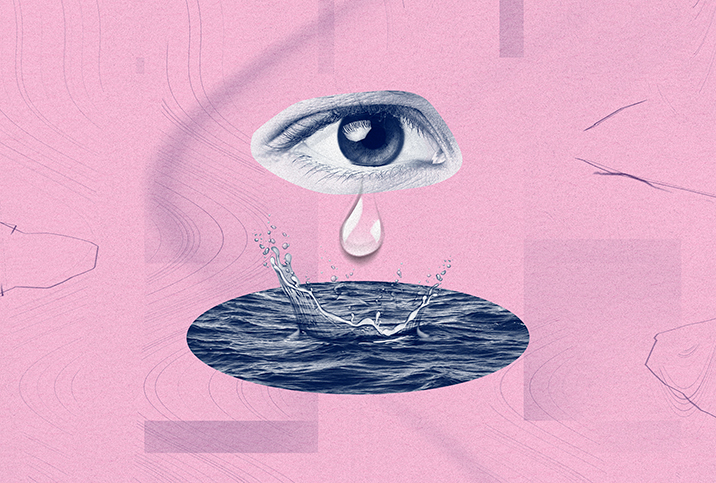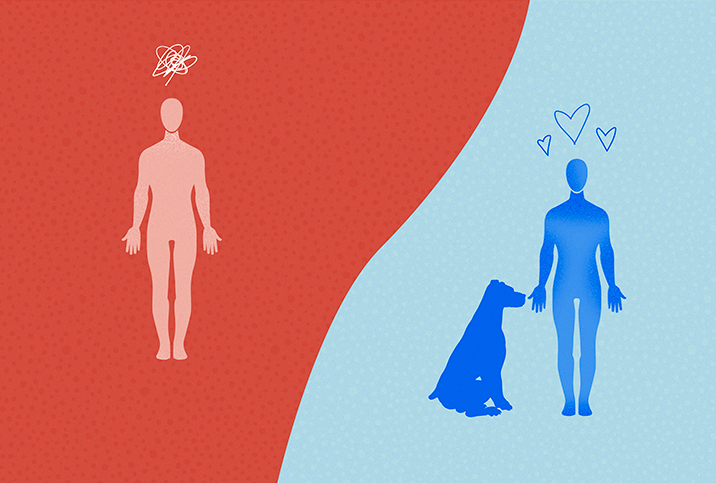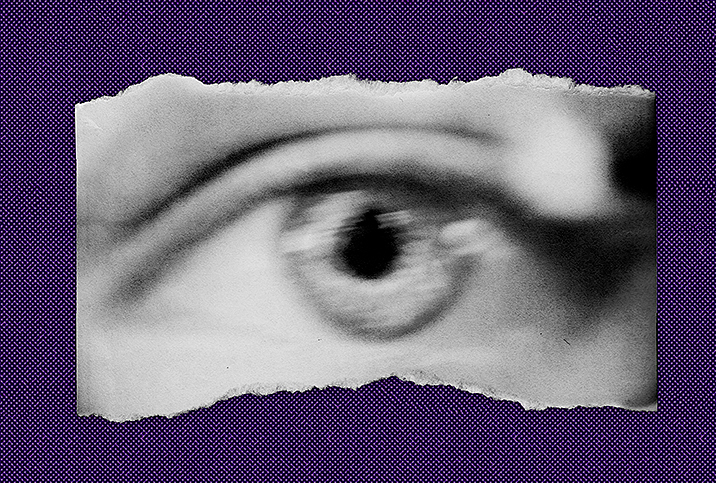Why Do We Cry and Can We Cry Too Much?

Several years ago, Karla participated in a psychedelic healing session to address her emotional and relationship problems. Specifically, Karla couldn't cry and couldn't connect her emotions to the trauma she endured as a child.
Karla (who preferred her last name not be used) had been in and out of relationships that largely ended for the same reason: She had trouble opening up and being emotionally or sexually intimate. She struggled at work and with friendships because she couldn't let anyone in and had no access to her feelings.
What happened in those sessions truly surprised Karla. Along with serious physical abuse, she had been sexually abused as a child and didn't remember the incident until a psychedelic substance unblocked her memory. Then Karla started to cry.
For weeks afterward, she couldn't seem to turn it off. As cathartic as it was to cry, she now felt a little open and raw and didn't know how to contain her emotions.
Like Karla, many people struggle to connect to their emotions and may not be able to cry. Or perhaps when they do cry, it becomes a flood they can't control.
Why do we cry anyway?
Edward Ergenzinger, who holds a doctorate in neuroscience and is a patent attorney and an author based in North Carolina, said the function of emotional crying is due to one of two theories.
"One theory is related to the fact that humans are born requiring an inordinate amount of care compared to the young of most other animals," he explained. "With an evolutionary basis in general mammalian distress calls, crying is a built-in signaling system that indicates there is some problem you can't handle on your own. And even though we grow up, that mechanism is still ingrained in us and is activated when we feel overwhelmed and unable to cope with some emotional trigger."
The second theory is that crying engenders empathy and compassion from other humans, Ergenzinger said. If that's the case, crying is likely a way to garner social connections among the species for whom emotional crying is a possibility.
Research indicates some critical mechanisms that can help us understand why emotional crying garners social connections. According to a 2018 literature review on the neurobiology of crying, emotional crying may be more common in mammals with larger brains, such as humans, whales and elephants—all of which are highly social animals.
The review shows that tearful crying is associated with increased sympathetic activity, as indicated by an accelerating heart rate and electrodermal activity on the skin. The vagus nerve works with the sympathetic and parasympathetic nervous systems to stimulate emotional crying, which is a process unique to mammals with larger brains for whom social connections are tied to survival.
Thus, emotional crying has a neurobiological purpose in eliciting connection and caretaking and allowing for emotional release, but these benefits are compromised if the care and connection we seek are unsafe or we don't feel able to release our emotions.
Crying as an emotional release
Crying is a critical part of remembering and mourning traumatic events and losses, according to Sheri Heller, L.C.S.W., a complex trauma therapist and coach in New York City.
"Emotional tears activate healing through regulating the parasympathetic nervous system and discharging suppressed and repressed energy that is somatically stuck in the body," she explained.
Indeed, the literature review on the neurobiology of crying discusses the act as a mechanism to regulate our nervous systems during emotional unrest. However, Heller noted that an individual has to be careful of abreaction, the term used in psychoanalysis to describe reliving an experience to purge it of its emotional excesses. It can be a way to unearth traumatic events that have been repressed.
"Unleashing blocked emotions and memories needs to be responsibly handled so meaningful processing can occur," she continued. "And this is where titration is critical. Feeling flooded by emotion does not allow for mind-body assimilation of memory. Rather, mindfully engaging with grief in manageable chunks allows for moving through cycles of arousal, dissociation and fear to achieve resolution. This prevents retraumatization and offers healing."
Emotional crying has a neurobiological purpose in eliciting connection and caretaking and allowing for emotional release.
In Karla's case, her ability to connect her emotions and begin crying again was critical, but she likely strayed into abreaction, equivalent to opening a floodgate, Heller said.
As discussed, crying is a biological way for mammals to elicit help and care, and connect to others. When someone like Karla has sustained severe trauma, that care and connection may be seen as dangerous and, thus, may cut off our desire to connect at all. As Heller pointed out, "Trauma may condition us to wall off our pain to the point of being gridlocked in a static state of tension. As a result, when tears surface, they are mechanically squelched."
Therefore, the roots of trauma may likely cut off our need to use crying as a way to elicit care and concern from others because it isn't safe to do so. Although it's healing for us to release our tears, it may be difficult to begin or end the process if we have a history of complex trauma. Unfortunately, when we do finally shed tears, they may come as a flooding abreaction because we've spent so many years walling off these emotions.
What is 'healthy' crying?
Heller noted all crying is cathartic and indicates a healthy opening into our emotional body. However, it seems we may need to go easy with our emotional experiences to process things in smaller doses. Too much catharsis can be more retraumatizing than a healing release.
While emotional crying is a helpful release and can help us connect, it's essential to know abreactions can and do occur, especially in the case of childhood trauma. Finding and using support is critical when abreactions flood our nervous system. Additionally, in the case of emotional release modalities such as psychedelics, it's essential to have support to help us understand the emotional blocks that may suppress our crying ability. By seeking professional support, we can avoid abreaction or at least have support to work through it.
Emotional release through crying is helpful but can also flood our nervous system if we're not prepared. Karla struggled to find emotional balance, but eventually, the cathartic crying brought her relief—after she found support from a trusted therapist. Now, her relationships and emotional connections have flourished.


















